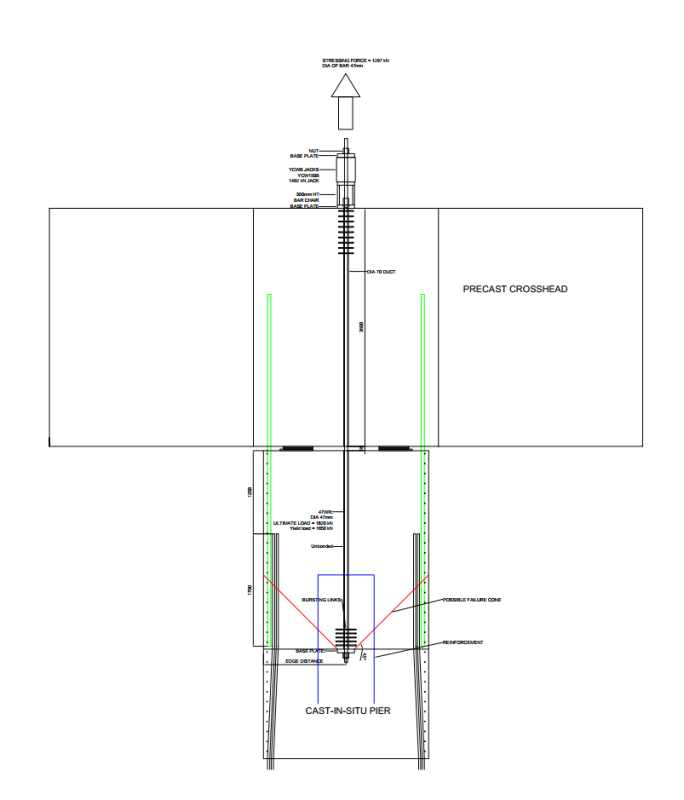struggle67
Structural
- Mar 29, 2013
- 116
Hi Guys
I have a 47 mm dia bar that is required to stress up to 1300 kN to attach and anchor down precast cantilever element to CIS concrete pier. I have not done it before. The force could not be transferred to the concrete through bond due to embedment length constraint so there will huge concentrated load at the base plate. I have checked the end plate capacity and bursting links. And I presume that cone failure (RED LINE) is also possible. How do I check to prevent cone failure? How do I check required edge distance?
Concrete Shear Strength x Failure Cone Area > 1300 kN? or Add reinforcement(BLUE)?. Any other things that I need to consider?

Thanks
I have a 47 mm dia bar that is required to stress up to 1300 kN to attach and anchor down precast cantilever element to CIS concrete pier. I have not done it before. The force could not be transferred to the concrete through bond due to embedment length constraint so there will huge concentrated load at the base plate. I have checked the end plate capacity and bursting links. And I presume that cone failure (RED LINE) is also possible. How do I check to prevent cone failure? How do I check required edge distance?
Concrete Shear Strength x Failure Cone Area > 1300 kN? or Add reinforcement(BLUE)?. Any other things that I need to consider?

Thanks



